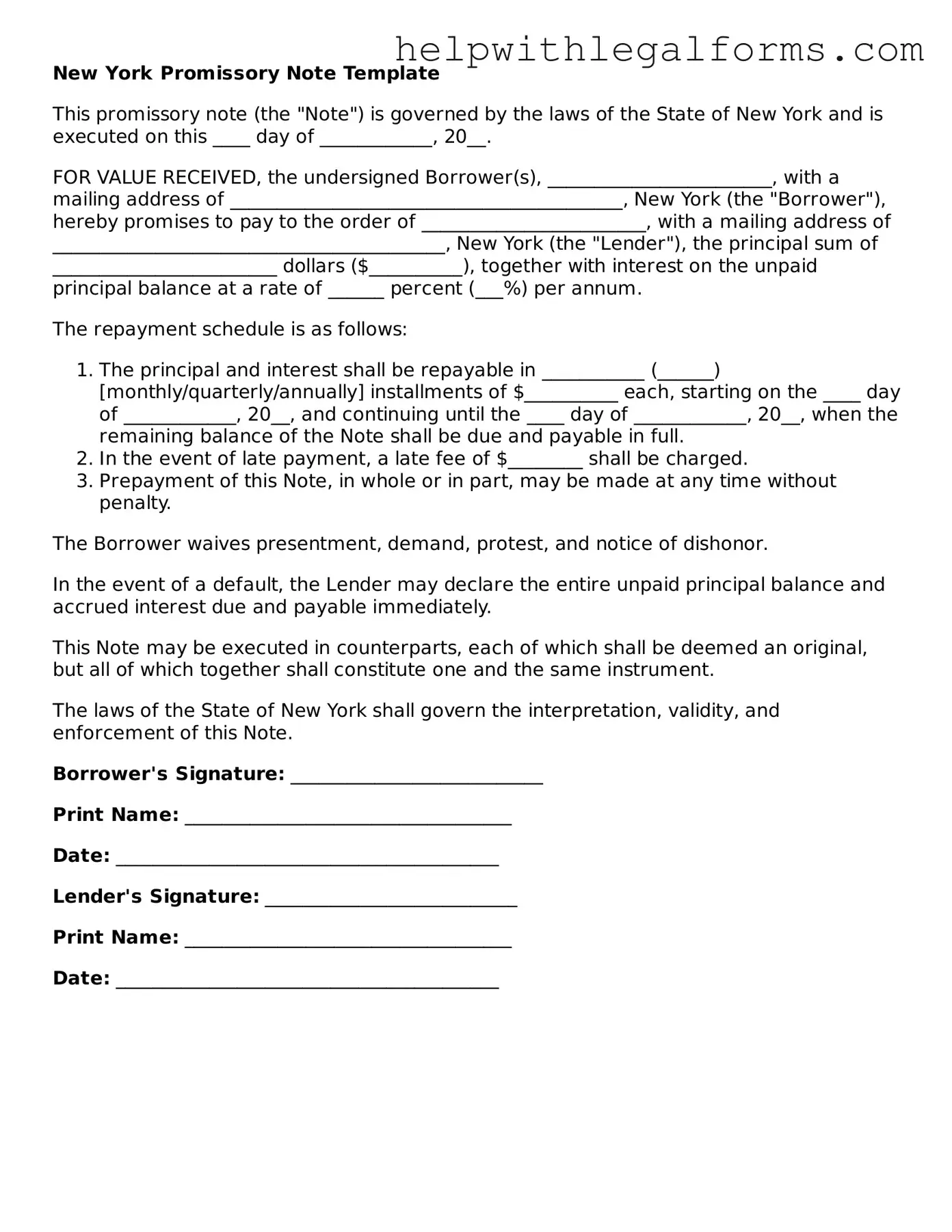What is a New York Promissory Note?
A New York Promissory Note is a legal agreement used in the state of New York where one party, known as the borrower, promises to repay a certain amount of money to another party, the lender. This document outlines how and when the payment will be made and can include details on interest rates, repayment schedule, and consequences of non-payment.
Is a New York Promissory Note legally binding?
Yes, a Promissory Note in New York is a legally binding document. Once it is signed by both parties, it becomes an official promise of payment from the borrower to the lender. This means the lender has the legal right to seek repayment according to the terms set out in the note, and legal actions can be taken if the borrower fails to comply.
Do I need a witness or notary for a Promissory Note in New York?
While New York law does not mandatorily require a witness or notary for a Promissory Note to be considered valid, it is highly recommended to have the note notarized or witnessed. This adds an extra layer of verification, can prevent disputes regarding the authenticity of the signatures, and could be helpful if enforcement of the note becomes necessary.
Can a Promissory Note include interest in New York?
Yes, a Promissory Note in New York can include interest on the loan amount. However, the interest rate must comply with New York’s usury laws, which set the maximum interest rate that can be charged. If the interest rate exceeds the legal limit, it could be considered usurious and may render the note unenforceable.
What happens if a borrower fails to pay according to the New York Promissory Note?
If a borrower fails to make payments according to the terms outlined in the New York Promissory Note, the lender has the right to initiate legal proceedings to recover the owed amount. This could include filing a lawsuit to enforce the note. The specific course of action may depend on the terms stated in the note and applicable state laws.
How can a New York Promissory Note be enforced if the borrower refuses to pay?
To enforce a New York Promissory Note, the lender may need to file a lawsuit against the borrower. Through the lawsuit, the lender can seek a judgment for the amount owed. Once a judgment is obtained, the lender may use various methods to collect the debt, including garnishing the borrower’s wages or placing a lien on their property.
Can changes be made to a Promissory Note after it has been signed in New York?
Changes can be made to a New York Promissory Note after it has been signed, but any modifications must be agreed upon by both the borrower and the lender. It is advisable to put any amendments in writing, and both parties should sign the updated document to ensure the changes are legally binding.
Are Promissory Notes the same as loans?
While Promissory Notes and loans are related, they are not exactly the same. A loan refers to the act of lending money, often represented by a larger agreement covering the loan's terms, conditions, and protections for both lender and borrower. A Promissory Note is a specific document that evidences the borrower's promise to repay the loan under agreed terms. It is a crucial component of the lending process but does not encompass the full scope of a loan agreement.
How long is a Promissory Note valid in New York?
The validity of a Promissory Note in New York, also known as its statute of limitations, is six years from the due date of the last payment outlined in the note or the date the borrower defaults, whichever occurs later. This means the lender has up to six years to take legal action to enforce the note from that time.
